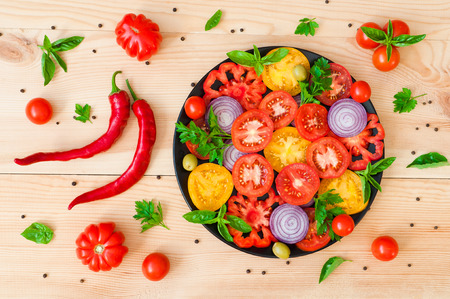Understanding Small Space Gardening in the UK
Urban gardening in Britain presents a set of unique challenges and rewarding opportunities. With city living often meaning limited outdoor space, many people turn to small patios, balconies, or even window boxes to grow their own produce. The British climate, known for its unpredictable rain and relatively mild temperatures, can also play a significant role in what thrives and what struggles in these compact gardens. Despite these constraints, British gardeners have developed clever traditions and techniques—such as vertical planting, container gardening, and companion planting—to make the most of every inch. Embracing these methods allows urban growers to maximise yields and enjoy fresh vegetables right at home, regardless of space limitations. Understanding the local context is key: selecting crops that suit both the microclimate and available space ensures a productive and enjoyable urban gardening experience.
Choosing High-Yield, Space-Efficient Vegetables
When space is at a premium in your urban garden, choosing the right vegetables is key to maximising your harvest. British gardeners benefit from a wide range of compact, productive plants that are perfectly suited to small plots, raised beds, or even containers on balconies and patios. The best options are those that grow upwards, can be harvested repeatedly, or mature quickly—ensuring you get the most out of every square inch.
Top Picks for Small Urban Gardens
The following table highlights some of the most reliable high-yield vegetables for UK urban gardens. These varieties not only save space but also offer excellent productivity and are well-loved across Britain.
| Vegetable | Why It’s Great | Growing Tips |
|---|---|---|
| Salad Leaves (Lettuce, Rocket, Spinach) | Fast-growing; cut-and-come-again crops; continuous harvests | Sow successionally for non-stop supply |
| Spring Onions | Compact; quick to mature; minimal space needed | Grow densely in pots or window boxes |
| Dwarf French Beans | High yield from small plants; ideal for containers | Choose bush varieties for limited space |
| Radishes | Mature rapidly; multiple crops per season possible | Sow little and often for a steady supply |
| Tumbling Tomatoes (e.g., ‘Tumbling Tom’) | Perfect for hanging baskets and containers; prolific fruiting | Feed regularly and keep well-watered |
| Courgettes (‘Patio Star’, ‘Defender’) | Compact varieties produce abundantly in pots | Harvest young fruits regularly to encourage more growth |
| Peas (‘Meteor’, ‘Kelvedon Wonder’) | Dwarf types climb upwards; good yields in small spaces | Support with sticks or netting as they grow |
| Herbs (Parsley, Basil, Chives) | Aromatic, versatile, and thrive in small pots or window sills | Pinch back to promote bushy growth and regular harvests |
British Favourites That Shine in Small Spaces
Lettuce mixes, spring onions, and peas are classic choices beloved by UK gardeners, offering both tradition and practicality. Tumbling tomato varieties and dwarf beans provide impressive yields without sprawling across valuable ground. Courgettes bred specifically for patios ensure you don’t miss out on summer gluts even with just a single container. By focusing on these compact yet productive plants, you’ll enjoy an abundant harvest tailored perfectly to city living.

3. Planning for Seasonal Success
Achieving a bountiful harvest in a small urban garden starts with understanding the rhythm of the UK’s seasons. Careful planning ensures you make the most of every square inch, keeping your plot productive year-round. Start by mapping out your growing calendar, matching each vegetable to its ideal sowing and harvesting times. In early spring, hardy crops like broad beans, kale, and spinach can be sown directly outdoors. As temperatures rise, transition to summer staples such as tomatoes, courgettes, and runner beans. Come late summer and autumn, think about fast-growing salads or overwintering crops like garlic and winter lettuce.
Succession Sowing for Continuous Harvests
Don’t sow everything at once! Instead, practise succession sowing—planting little and often every few weeks. This method ensures you’re not overwhelmed with a glut all at once, and you’ll have fresh produce for longer. For example, sow salad leaves or radishes fortnightly from spring through late summer to maintain a steady supply.
Crop Rotation for Healthy Soil
Even in compact urban spaces, crop rotation is vital for preventing disease build-up and maintaining soil health. Rotate your crops so that families (like brassicas, legumes, roots) don’t grow in the same spot two years running. This helps to manage pests naturally and replenish nutrients in the soil—a key tip for maximising yields season after season.
Tip: Use Raised Beds or Containers
If space is tight, raised beds or containers allow for easier management of crop rotation and soil quality. Simply label each area or pot to track what was grown where last year and switch things up next season.
With thoughtful planning tailored to the UK climate, even the smallest urban garden can become a productive oasis throughout the year.
Maximising Vertical and Container Growing
Making the most of limited space is key for urban gardeners. By thinking vertically and using containers, you can transform even the smallest balcony or patio into a productive vegetable patch. Here are some innovative ideas to help maximise yields in tight spaces, perfectly suited to UK city living.
Vertical Gardening Solutions
Vertical gardens allow you to grow upwards rather than outwards, saving precious ground space. You can use wall-mounted planters, hanging pockets, or sturdy trellises for climbing vegetables. This method is ideal for crops like peas, beans, and cucumbers, which naturally grow upwards and benefit from good air circulation.
Best Vegetables for Vertical Growing
| Vegetable | Vertical Support Needed | Ideal Spot |
|---|---|---|
| Runner Beans | Trellis or bamboo canes | Sunny wall or fence |
| Cucumbers | Netting or strong trellis | Sheltered spot with good light |
| Peas | Wire mesh or sticks | Partial shade, sheltered from wind |
Clever Use of Pots and Containers
Pots and containers offer flexibility—move them around to catch the sun, group them for microclimates, or tuck them into corners. Choose deep pots for root crops like carrots and compact containers for herbs and salad leaves. Growbags are also popular on patios for tomatoes and peppers.
Top Picks for Containers
| Vegetable | Container Depth | Special Tips |
|---|---|---|
| Lettuce & Salad Leaves | 15–20cm | Sow little and often for continuous harvests |
| Tomatoes (Bush Types) | 30cm+ | Add stakes for support; feed regularly |
| Carrots (Short Varieties) | 25cm+ | Select varieties bred for containers (e.g., ‘Paris Market’) |
Urban Gardeners’ Tip:
If you’re short on horizontal space, try stacking pots in a pyramid or using tiered plant stands. Window boxes fixed to railings work brilliantly for herbs and strawberries, while hanging baskets can be filled with trailing cherry tomatoes or tumbling peas. These approaches not only increase your growing area but also create an attractive green feature in your urban home.
5. Tips for Boosting Productivity in Urban Gardens
Soil Improvement: The Foundation of Healthy Crops
Good soil is the key to a thriving urban garden, especially when space is limited. Start by enriching your soil with well-rotted compost or organic matter each year. This helps retain moisture and adds essential nutrients, which is particularly important for container gardens and raised beds commonly used in UK cities. If your soil tends to be heavy clay or very sandy, consider mixing in some horticultural grit or peat-free compost to improve drainage and texture. Regularly check pH levels and adjust if needed; most vegetables prefer slightly acidic to neutral soil.
Companion Planting: Make the Most of Every Inch
Companion planting is a clever way to maximise yields while keeping your plants healthy. For example, planting carrots alongside spring onions can help deter carrot fly, a common UK pest. Marigolds are great companions for many vegetables as they attract pollinators and repel aphids. Try interplanting fast-growing crops like radishes between slower ones such as brassicas—this lets you harvest more from the same patch over time. Herbs like basil and chives not only save space but can also enhance growth and flavour while reducing pest problems.
Pest Management: Stay Ahead Naturally
Urban gardens can be susceptible to pests, but chemical solutions aren’t always necessary or desirable. Use fine mesh netting to protect brassicas from cabbage white butterflies and pigeons—a frequent challenge in UK city gardens. Encourage natural predators like ladybirds by planting nectar-rich flowers nearby. Slugs can be kept at bay with crushed eggshells or copper tape around pots. Inspect your plants regularly so you can remove pests by hand before they become an issue. Remember, a diverse garden with lots of different plants is less likely to suffer from major infestations.
Water Wisely for Maximum Yields
Consistent watering is vital for urban vegetable gardens, especially during dry spells. Mulching with organic materials helps retain moisture and suppress weeds, saving you time and effort. Using water butts to collect rainwater is both eco-friendly and cost-effective—plus, rainwater is often better for your plants than tap water in the UK.
Plan and Rotate Your Crops
Finally, keep a simple record of where you plant each crop every year. Rotating crops prevents soil-borne diseases and balances nutrient use, giving you healthier plants and higher yields season after season.
6. Connecting with the Local Allotment Community
One of the greatest advantages of gardening in the UK is the strong sense of community found in local allotments and gardening groups. When you’re looking to maximise yields in a small urban garden, connecting with your local allotment community can be a real game-changer. These groups are not just about growing veg; they’re about sharing knowledge, seeds, surplus crops, and practical solutions that work in our unique British climate.
Shared Resources
Allotment communities often pool resources such as tools, compost bins, and even water storage solutions. This can save you money and space—both precious in an urban setting. Many groups also organise plant swaps or seedling exchanges, helping you try new varieties suited to local conditions without extra cost.
Gaining Practical Knowledge
The wealth of experience within these communities is invaluable. Seasoned gardeners are usually happy to share advice on everything from crop rotation to pest control, tailored for UK weather patterns. Engaging with others means you’ll pick up tips on which vegetable varieties thrive best in your specific area—insight you won’t always find online or in books.
Inspiration and Motivation
Regular visits to your allotment or joining a neighbourhood gardening group can boost your motivation. Seeing what others achieve with limited space can inspire new ideas for maximising yields at home. Community events, competitions, and open days offer opportunities to learn and celebrate together.
How to Get Involved
Start by checking noticeboards at local libraries or community centres for information on nearby allotments or gardening societies. Social media groups are also a great way to connect with fellow growers in your area. Don’t hesitate to introduce yourself—most communities welcome newcomers warmly and are keen to support each other’s gardening journeys.
By becoming part of a local allotment community, you gain access to collective wisdom, shared resources, and inspiration—all key ingredients for making the most of your small urban garden in the UK.


